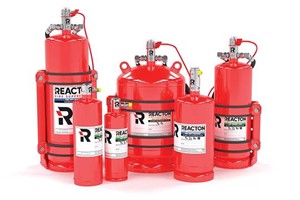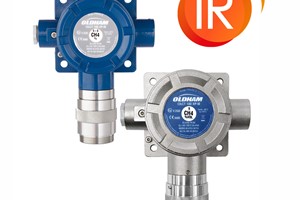The global fire protection system market size is expected to reach USD 130.37 billion by 2030, according to a study It is expected to expand at a CAGR of 6.7% from 2022 to 2030. Increasing adoption of wireless technology in fire protection systems, growing human and property loss owing to fire breakouts, and stringent fire safety regulations are projected to fuel the market growth.
Increasing implementation of building safety codes and renovation projects is also anticipated to be a major factor influencing the market growth. The application and usage of fire protection systems are anticipated to increase continuously with the developments of commercial entities and corporations.
Furthermore, technology enhancements such as extinguishing technology based on mist and products such as laser optical/infrared smoke detectors, alarms with embedded voice evacuation announcements, hypoxic air fire suppression systems, and wireless fire alarm systems are expected to gain traction in the market globally. Moreover, in 2020, the market will be hampered due to the COVID-19 crisis, which has interrupted production, impacted demand, and caused supply chain disruption.
The growing trend of integrating fire alarm and detection systems with building automation systems offers vast growth opportunities to the market. Connectivity with building automation systems is increasingly becoming a major feature of fire protection systems in commercial, industrial, and residential applications.
This can be attributed to the fact that such integration allows for the development of systems that are capable of sharing and gathering data, which can help in alerting individuals about fire safety issues in the premises. A notable rise in investments in smart building automation technologies across several regions is expected to lead to new opportunities for building automation systems in the industrial and commercial sectors.
Consumers in developed regions such as Europe and North America have seen a steady rise in demand over the past few years, and the growth trend is also projected to continue over the next few years. However, a lack of stringent regulations and the high cost of advanced fire protection systems have kept the markets in emerging countries largely untapped.
Nevertheless, improving economic conditions in countries, including Brazil and India, are anticipated to boost the demand for fire protection systems over the forecast period.
Infrastructural development activities across the Asia Pacific region owing to the rising demand for new transport and utility infrastructure will drive the demand. The high rate of urbanization is placing increased pressure on under-invested, weak city infrastructure.
The consecutive rise in focus on new residential and infrastructural development projects is expected to propel the demand for fire protection systems across this region; thus, such factors are fueling the market growth.
- The fire detection product segment dominated the market in 2021 and the trend is expected to continue over the forecast period
- By service, the maintenance services segment is anticipated to be the fastest-growing segment over the forecast period. The demand for these services is often driven by new building construction activities, modernization activities, and demand for system upgrades
- The commercial application segment dominated the market in 2021 and the trend is expected to continue over the forecast period. Increasing investment by companies in reducing the loss of property and life and safeguarding the infrastructure across several applications is estimated to further propel the demand for fire protection systems in the commercial sector
- North America held the largest revenue share of over 35.0% in 2021. The increasing demand for smart buildings and intelligent houses, which deliver optimum safety and security, is expected to drive the regional market
Overview:
Automatic fire suppression is a system that can detect and extinguish, or contain, a fire without having to rely on human intervention. In their simplest form, these systems have a means of detection, actuation and delivery.
Fully automatic fire suppression systems take away the need to depend on a person to discover and tackle a fire. Within seconds of a fire occurring, the detection system detects the radiant heat from the fire, automatically actuates the system and delivers the extinguishing agents straight into the heart of the fire.
When fire protection is left solely to human interaction, there are inherent risks. Firstly, someone needs to be physically present to be able to step in and many applications simply don’t allow for this due to location and/or environments not being accessible for humans. Examples are remote power generation, wind turbines and many industrial applications where noise, heat and contaminants are excessive.
All of these risks are mitigated when a Reacton automatic fire suppression system is installed. The fire suppression system is in charge of the detection, which will be located in and around the fire risk areas. It will offer repeatable detection in the hardest to reach areas without false alarms. The extinguishing agent will be precisely discharged and delivered straight into the heart of the fire. Most importantly, this happens without any person having to be present or involved. Meaning Reacton’s system provides fire protection day and night, keeping watch over your assets so you don’t have to.













